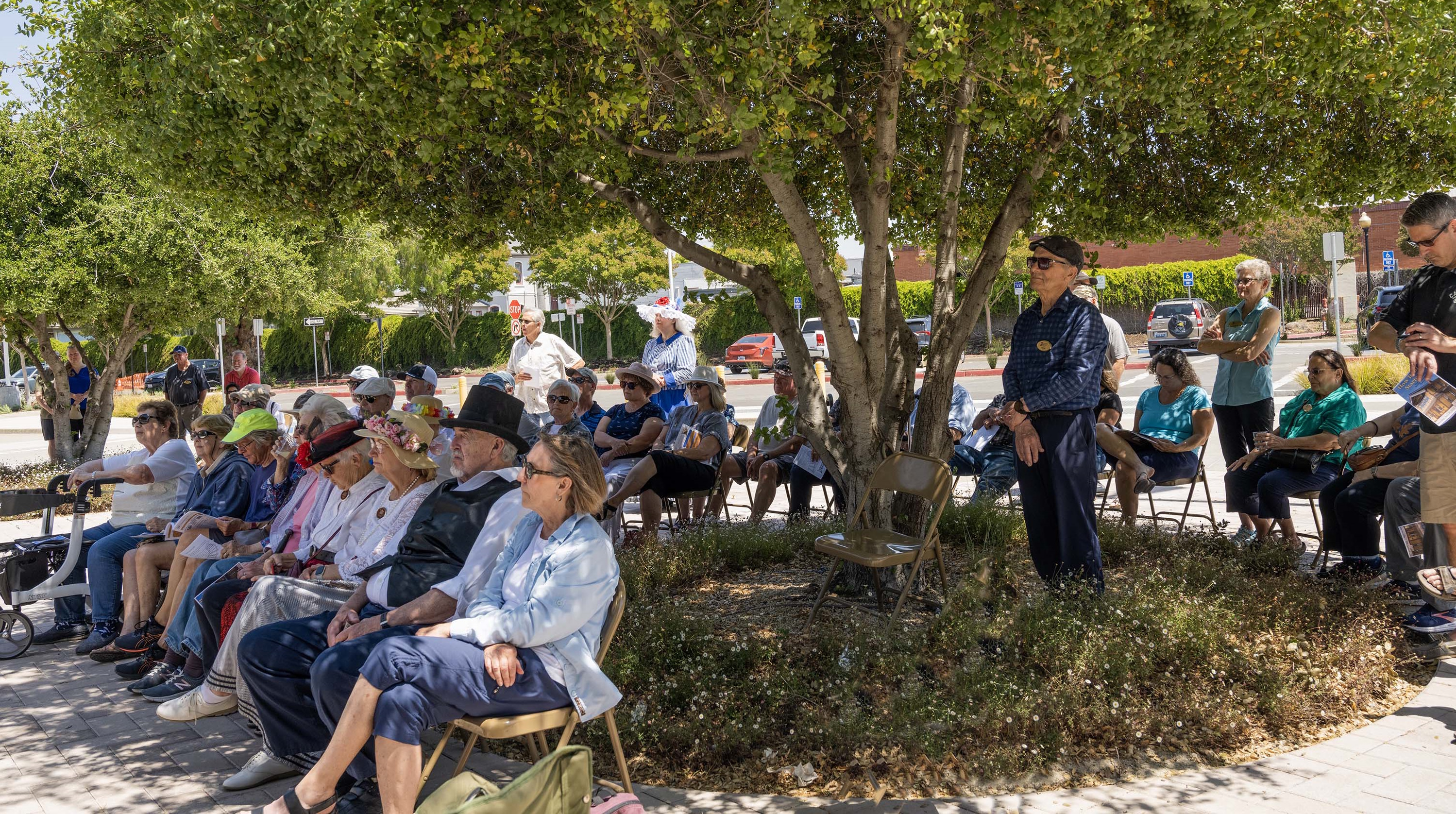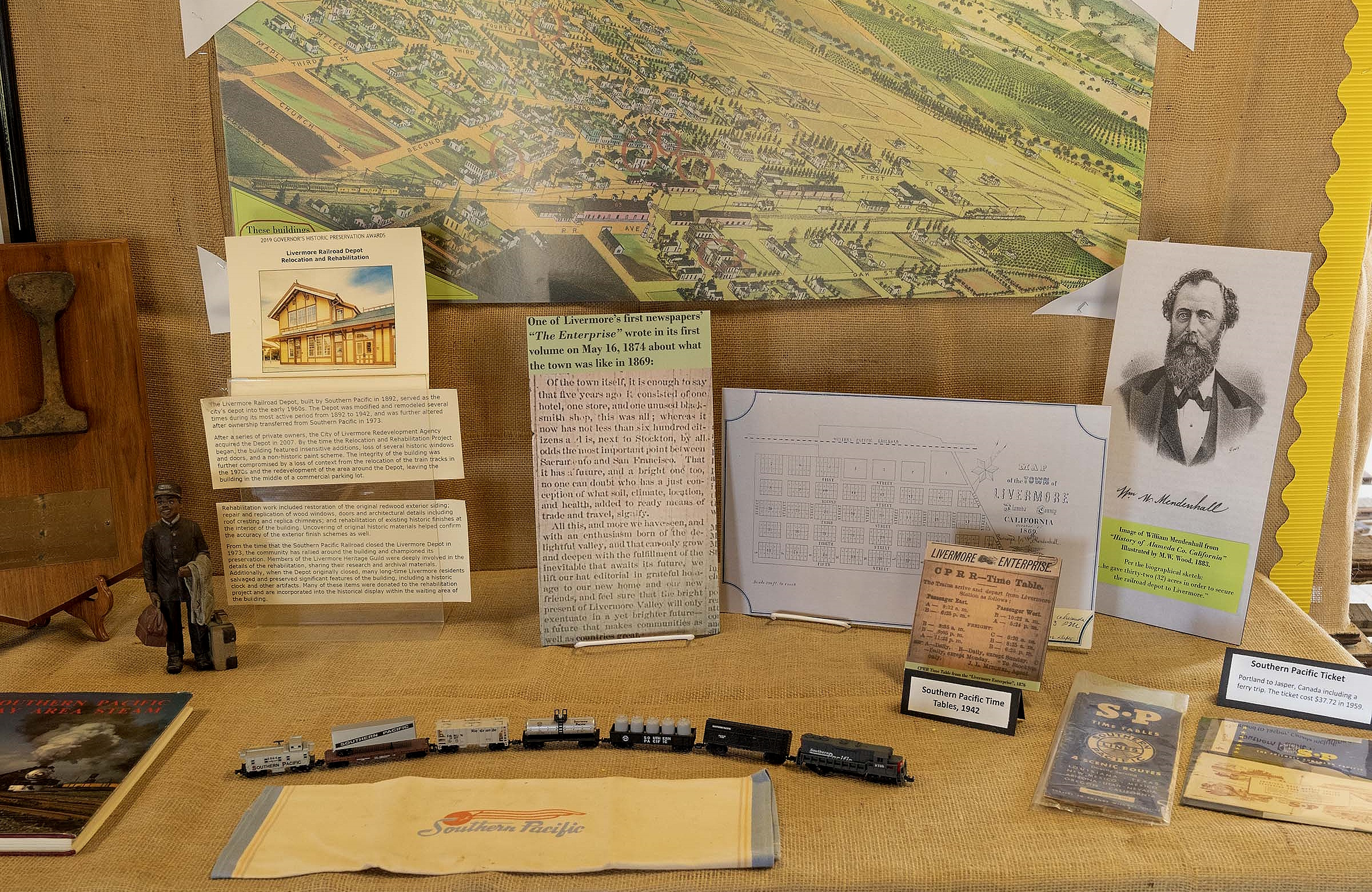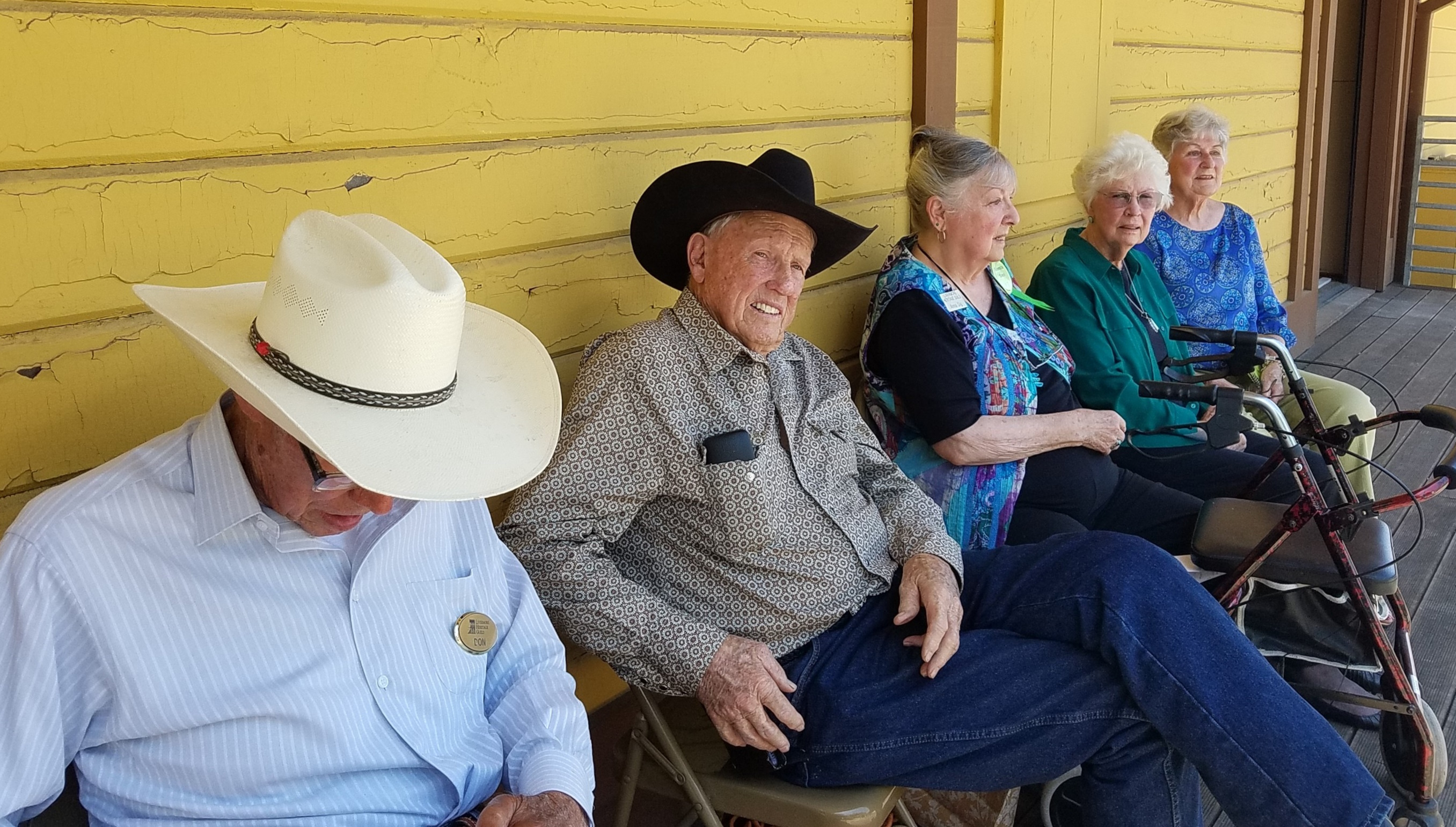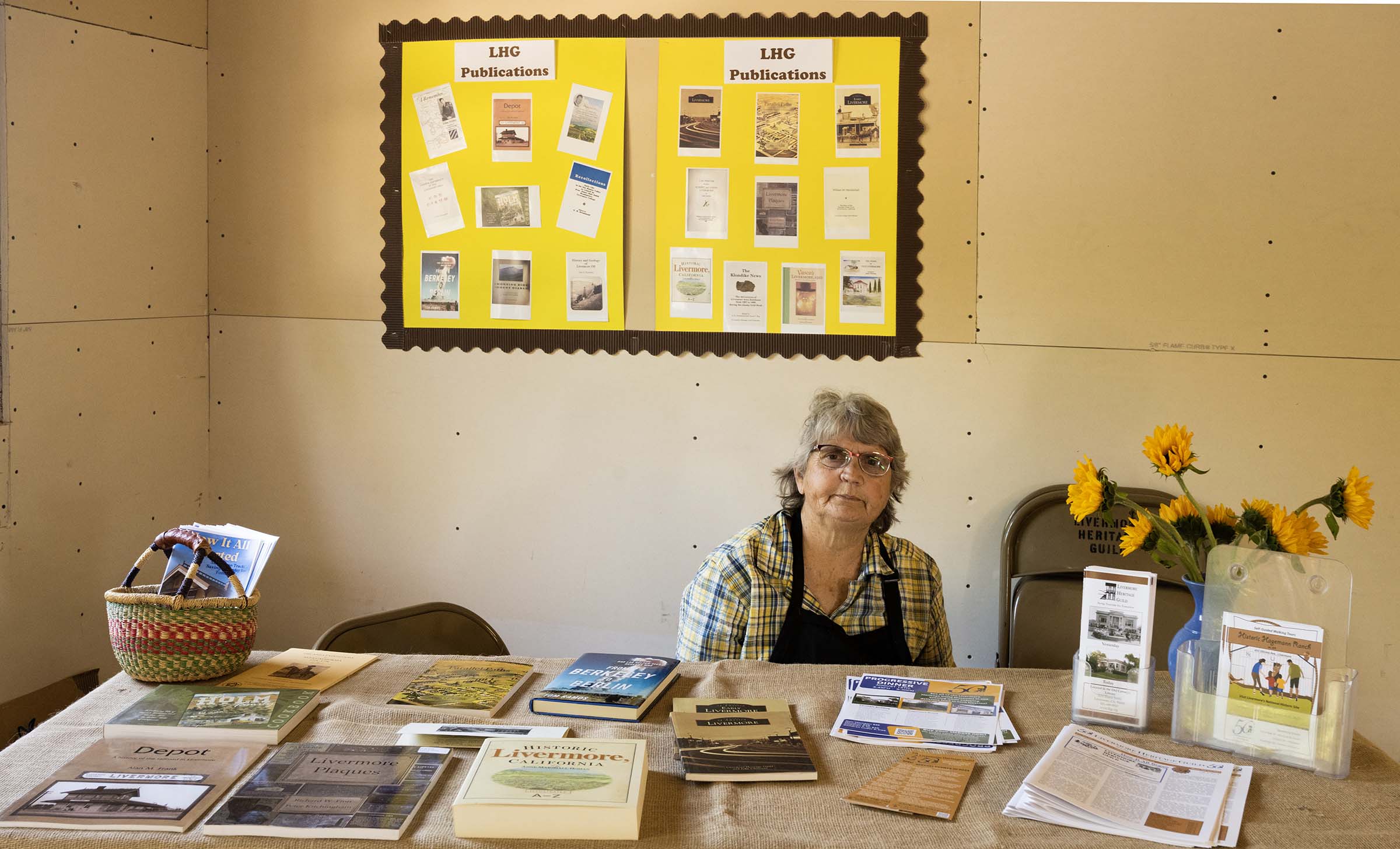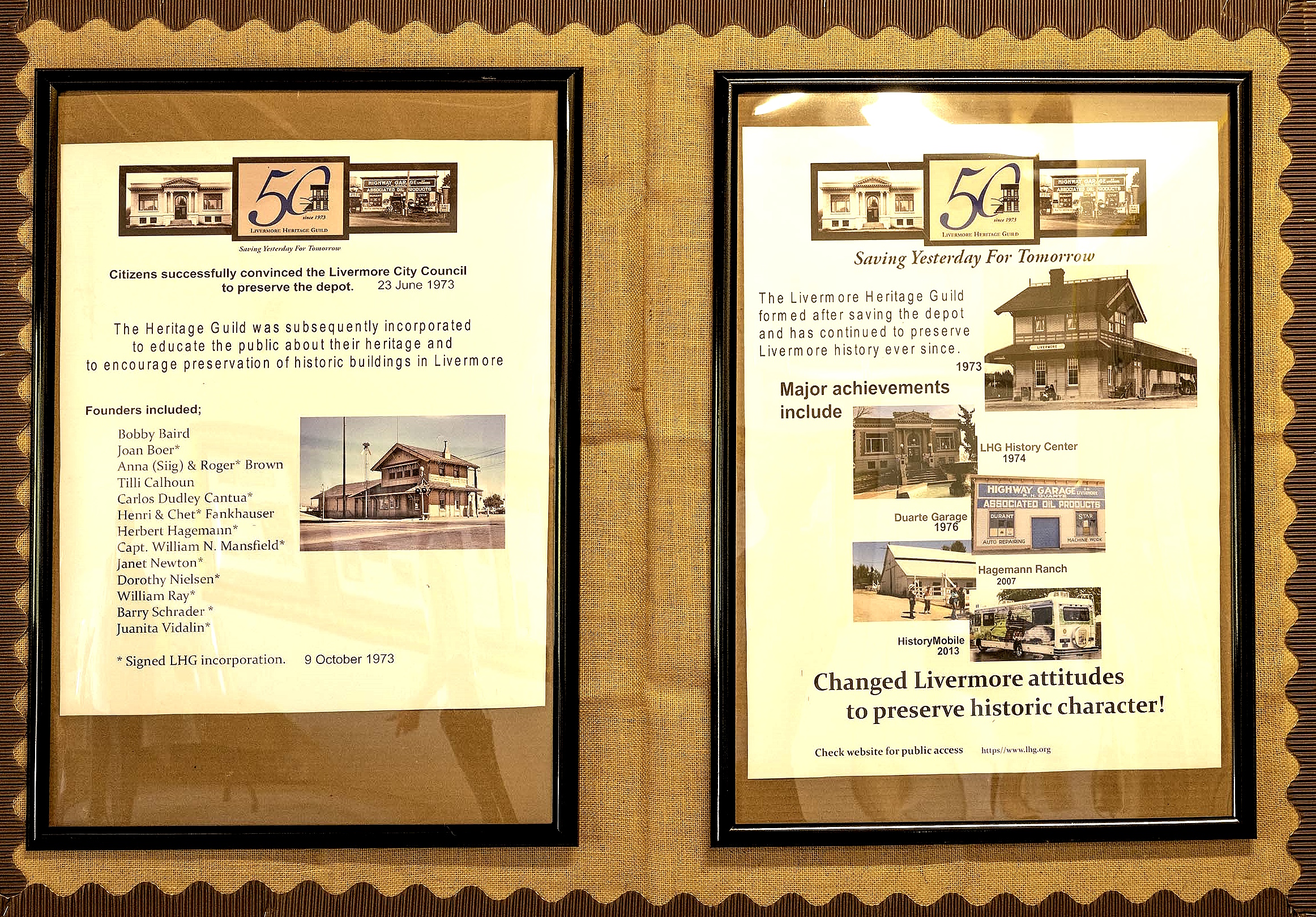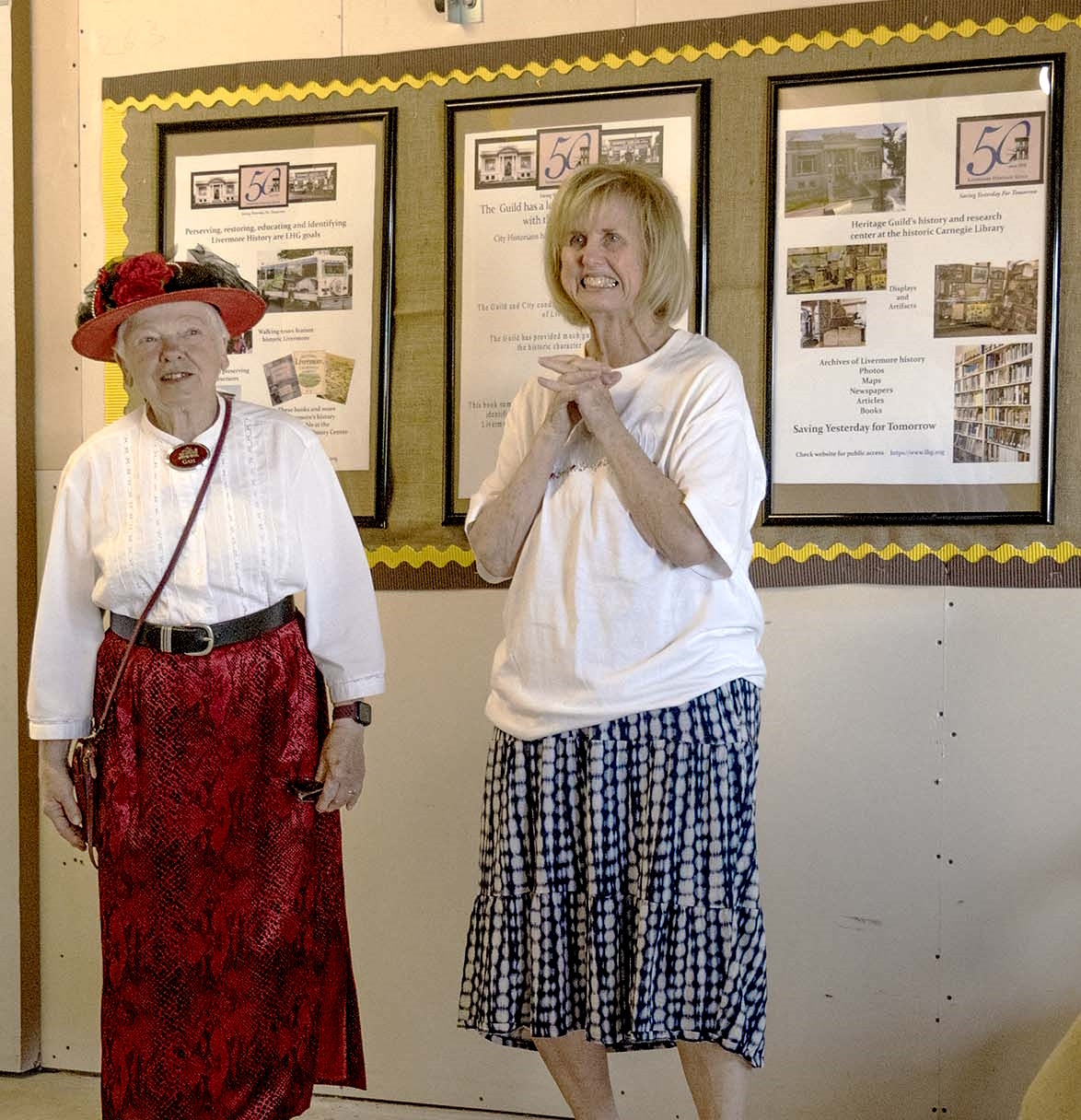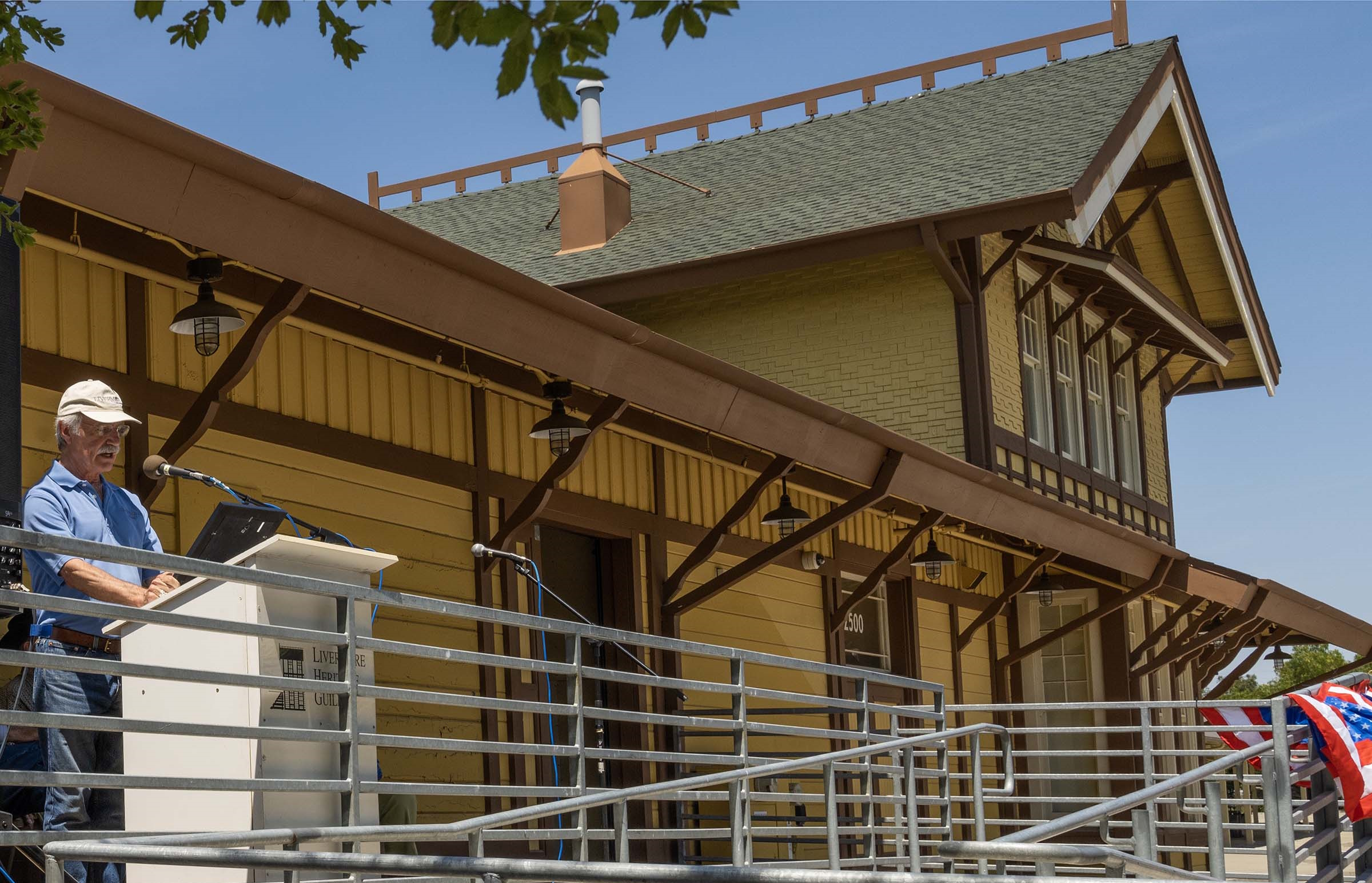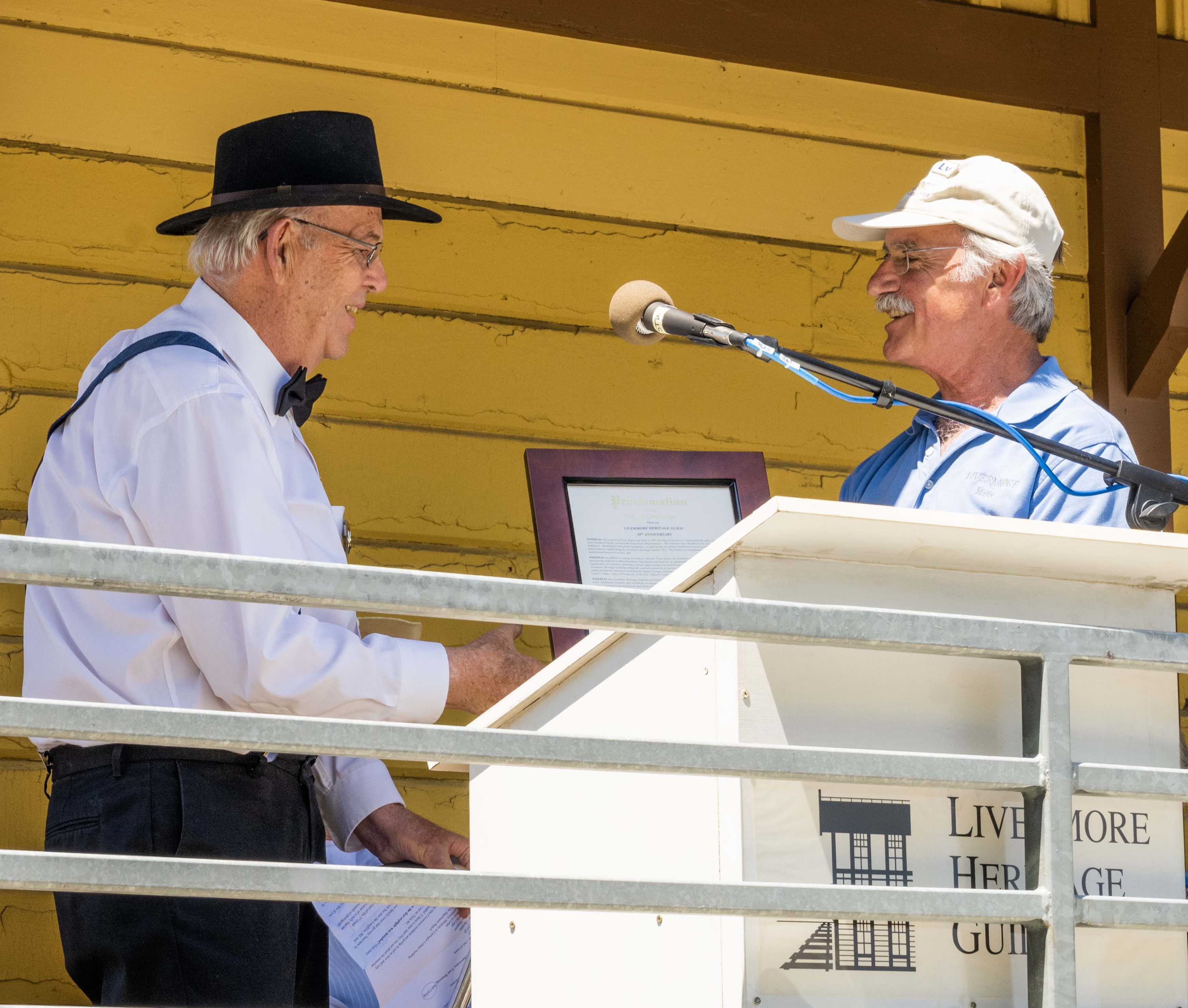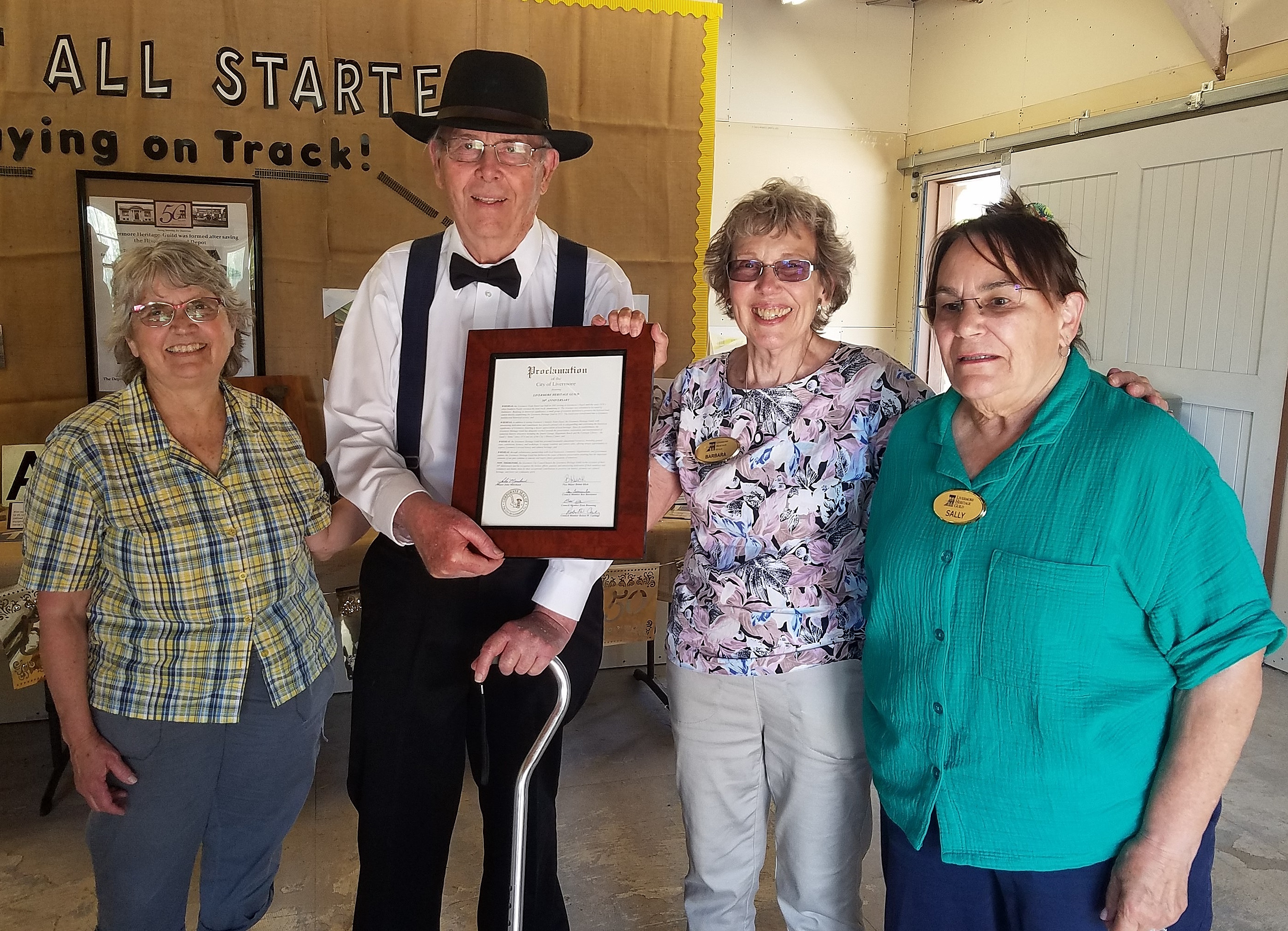
LIVERMORE RAILROAD DEPOT 2023
Celebration of 50th Anniversary of GuildFifty years ago in June 1973 a group of concerned area citizens physically stopped the demolition of the Southern Pacific Railroad Depot. Saving the Depot was the impetus for this group to incorporate and form a 501 (c) (3) non profit, the Livermore Heritage Guild. Throughout these five decades the Guild has continued to preserve and restore local historic sites.
To celebrate our 50th anniversary the Heritage Guild held an open house in the Freight Room of the Depot. Displays and posters described Depot history. Moderated by Richard Finn, five octonarians spoke about their early memories of Livermore.
This year marks the fiftieth year since the founding of the Livermore Heritage Guild. The success of stopping the demolition of the depot was the most visible and celebrated event in the founding process for the Guild. However, the guild was actually founded through a series of events that year.
The kickoff of the founding process was an article in the Tri-Valley Herald on February 24, 1973. The article revealed that the Southern Pacific Railroad (SP) had contracted for the demolition of the depot. Two days earlier the demolition contract was purchased by Otto Berk and Del Sullivan for the lumber to be used for stables and fencing at their Four Seasons Riding Academy in Fremont. They told this to Dorothy Rosa and gave her permission to contact the press. Two days later Chet Fankhauser asked the City Council to arrange a meeting with the railroad to see what could be done to preserve the depot. The railroad subsequently placed a stop order on the demolition before it was started.
This was an era when railroads were failing. SP no longer needed the extensive station property with local freight service gone. The railroad started building strip malls and shopping centers on excess property as profit centers. Thanks to Mendenhall’s gift and subsequent acquisitions, the Livermore property was very much larger than other stations. Stations were more commonly confined within the four-hundred- foot-wide right-of-way defined by the Pacific Railroad Act. The Livermore station property extended from Livermore Avenue to S Street. They were planning to use the entire property for a large regional shopping center. The plan had been presented to the City Council the previous year, with not a word about the fate of the depot. This was a period of rapid development with the city administration supportive of the progress. Concerns about the rapid development were emerging both with the public and some members of the City Council.
The Amador Livermore Valley Historical Society, based in Pleasanton, was asked by the Livermore City Council to form a committee to study the depot issue. A meeting was scheduled then abruptly canceled without notifying Livermore members. The Livermore members showed up at the non-meeting and subsequently learned the chairman of the Valley Society had expressed the opinion that it should be torn down. The Livermore members met separately then most resigned from the Society.
At that time SP considered itself a conglomerate including the separate corporations SP Transportation Co. (SPT) and SP Development Co. (SPD). SPT and SPD either operated as the separate corporations they technically were or operated in concert when it was most advantageous to the parent corporation. Their offices were co-located in the same building, and they had a common mailing address at #1 Market St. in San Francisco. The distinction was hardly mentioned or understood by most city residents. From discussion captured in the minutes, it is not clear that even the City Council members fully understood the distinction. The SPD representative regularly attended meetings of importance to the development, but SPT was generally not represented.
A representative of SPD gave a verbal apology to the City Council on March 26, and declared they would not destroy the depot for five years. By April the former Society members were calling themselves the Livermore Heritage Guild with the goal of preserving the depot and creating a museum. A letter to LHG founding member Janet Newton on May 16, from a spokesman for SPT indicated SPT and SPD were cooperating in the station site development and that the depot must be removed from the property. This letter seemed to indicate the March SPD apology and pledge to the City Council, as well as later claims of miscommunication, were disingenuous.
The SPT demolition order was reactivated by phone on June 15, 1973, then on Thursday, June 21, a demolition permit was issued by the city’s building inspector. The Guild’s plea for preservation of the depot, was on the City Council agenda to be discussed at its meeting on Monday, June 25. That evening the City Council voted for the preservation of the depot under the Guild’s proposal. No one, neither the SPD representative at the meeting, the City Manager nor the city’s absent building inspector, informed the demolition contractor or SPT personnel of the council’s decision. The city’s building inspector later disclosed that he had been pressured to issue the demolition permit by “higher ups,” at the time the railroad was planning its major commercial development. Actual demolition had begun earlier that day, just hours before the council meeting. The Valley Times news photographer, Lee Estes, discovered the ongoing demolition on Wednesday morning, June 27. He immediately notified his editor, Barry Schrader, who then alerted both the City Manager and Guild members. Members of the LHG gathered at the depot and physically interceded until a stop order was processed. At that point, much of the interior had been stripped and little remained of the building but the exterior shell. A member of the demolition crew remarked that if the bulldozer had started that morning, it would have been all done. Newspaper headlines on June 29: “Communication Breakdown Almost Erases Landmark Depot.”
Many years later, Barry Schrader told me the headlines were the official statement by the City to sweep the real reasons under the rug. The newspaper articles celebrated the Guild’s rescue of the gutted shell of the depot and the Guild’s ambitions. However, they said no more than City’s statement about what actually lead to the situation.
In July and August of 1973, several letters with various proposals passed back and forth between the SPD spokesman, City Manager, and the Livermore Heritage Guild. At that time SPD offered to give the depot to the city but required its removal from railroad property. Since there was never an agreement, funding or plan to move the depot, the offer was dropped. A month later, a spokesman for the SPD apologized to the City Council for the “mix up” and the second attempt to demolish the building. He stated that SPT, the actual owner of the depot, was a separate company. He also noted they rarely communicated with each other. At that same meeting, the Livermore Heritage Guild expressed the goal of restoring the depot and creating a museum using donations and volunteer labor. The Guild’s goal was initially thwarted by the SPD spokesman. He claimed they would not allow construction adjacent to active track, even though a process to relocate the tracks was already in progress. However, because of the considerable demolition especially to the interior, restoration would have been an economic challenge for a volunteer organization. There was ample indication that SPD and SPT were collaborating, playing “good boy, bad boy” throughout this process. SP finally recognized the promise not to further demolish the depot for at least five years. Instead they leased the depot to a restaurant and other business. However, SP continued to oppose any historic restoration of the depot throughout its ownership, which continued until the demise of SP in 1983.
The guild thwarted by SP from restoring the depot to a museum, was successful in preventing its total destruction. They subsequently recognized the importance of preserving historic properties to help maintain the character of the city. They then filed incorporation papers with the state on October 9, 1973. Incorporation could be considered the final event in the founding process, which took the better part of the year.
The founding of Livermore took a parallel but much longer path. If you ask, “when was Livermore founded,” the answer will depend on who you asked. Members of the Heritage Guild will say 1869, when it was plated. Members of the administration will answer, when it was incorporated in 1876. Those were both major recognizable events in the founding process.
The founding process really began in the mid 1860’s. William and Martin Mendenhall, aware of the railroad’s survey, purchased plot eighteen of the Bernal Bankruptcy in 1867. Plot Eighteen was crossed by the railroad survey and a good location to serve the ranchers in the valley. They likely understood the railroad’s policy to build a station exactly where you wanted it if you gave them the property. William’s clear title of the plot was recorded by the county in the summer of 1869. He likely committed the gift of the property for the station at that time. The railroad was opened through the Livermore Valley on September 10, 1869.
Mendenhall filed a plat with the County of Alameda for a town named for the deceased pioneer, Robert Livermore, on November 4, 1869. The plat was a speculative plan for an empty property with area reserved for a station included in the plat. The deed to the railroad for the station site was recorded on May 11, 1870. It was slightly modified from Mendenhall’s original plat to accommodate the railroad’s detailed station plan. The railroad’s station plan was prepared in 1869 or early 1870. The station agency was established in 1869, with a box car as a temporary depot. The first depot building at the station was completed in the summer of 1870.
Charles McLaughlin’s claim of alternate un-surveyed sections of Mexican land grant properties was approved by the federal land office in 1872. His sale of those properties created a land boom and started significant development of the town. Under thirty structures had been constructed in Livermore by the end of that year. Businesses in Laddsville, destroyed by fire were relocated along First Street in Livermore. Livermore’s population had grown to eight hundred and thirty when it was officially incorporated on August 21, 1876.
It should be clear that the founding of the Guild and the town were processes, not the date of certain events within the process. Identifying specific events as the date for founding of nearly any organization is often unreal and interpreted differently by individuals. The date June 27, 1973 is not actually when LHG was founded. We really are celebrating the emerging Guild’s first major success. The event helped solidify the founding process for the Guild by demonstrating and publicizing its value.
